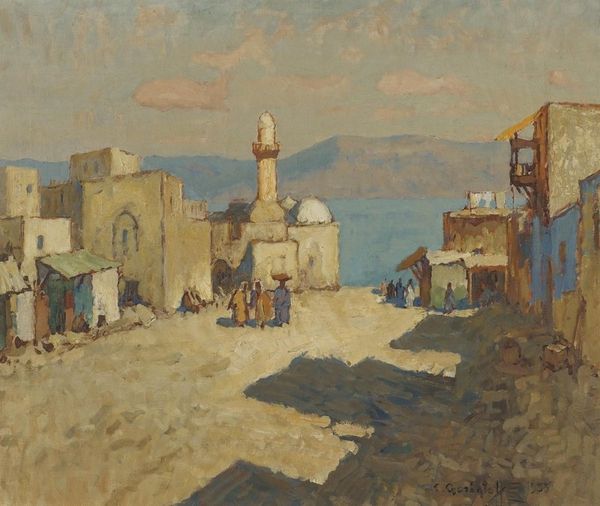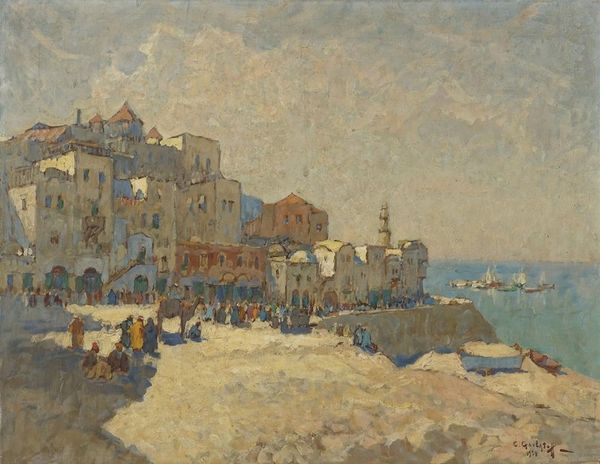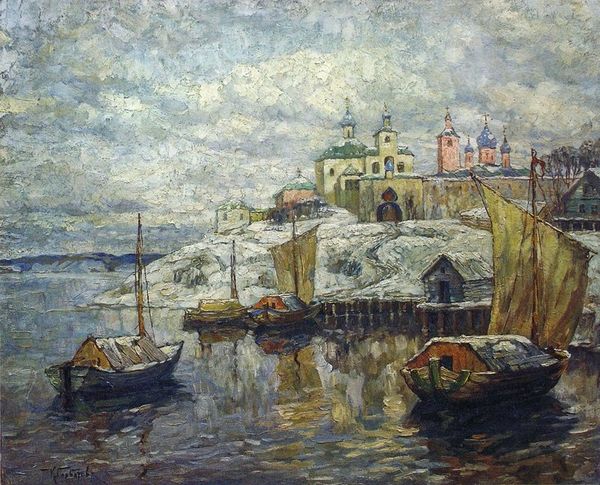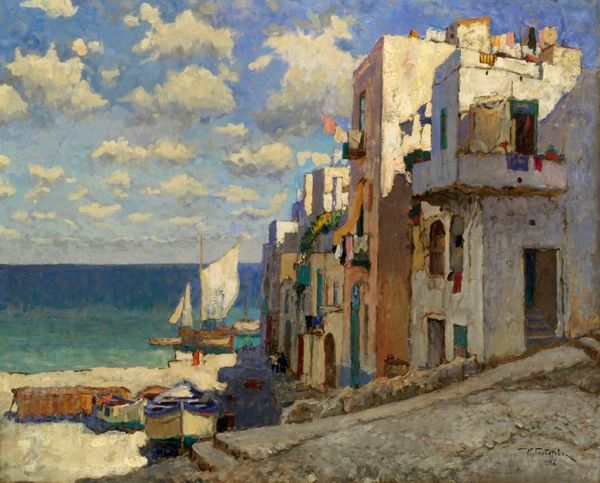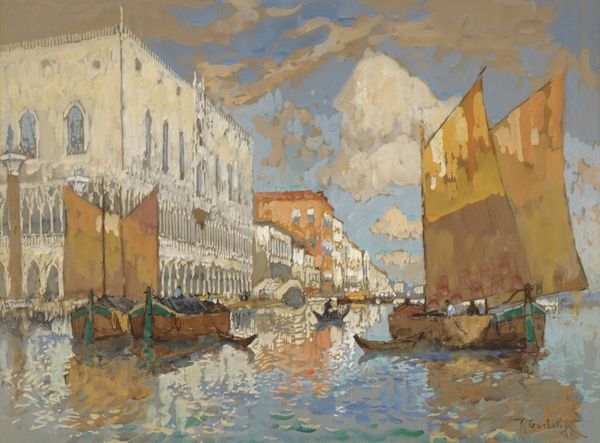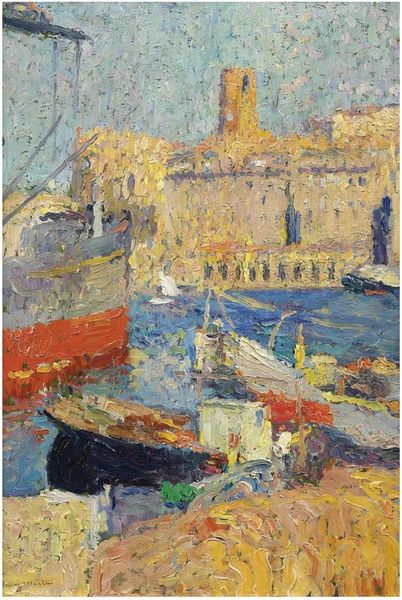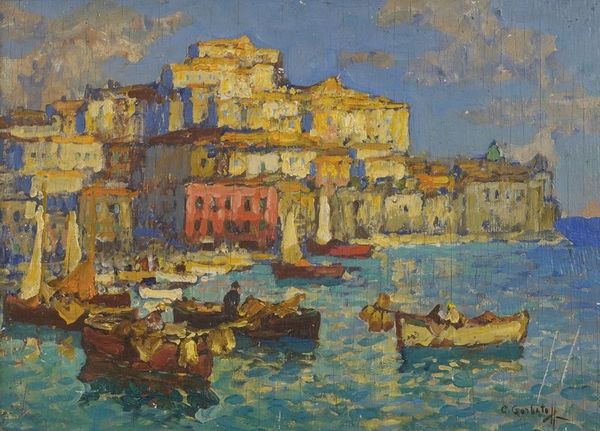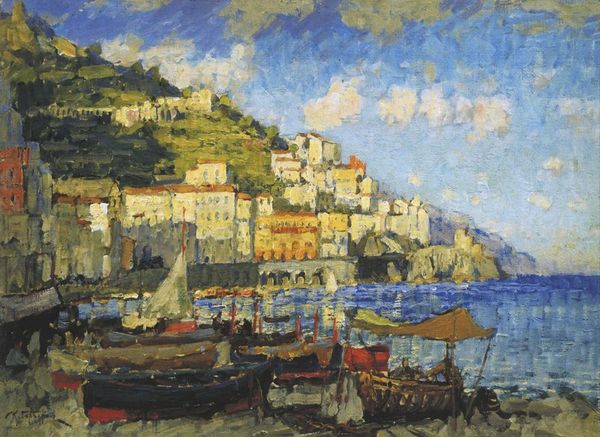
plein-air, oil-paint
#
impressionism
#
plein-air
#
oil-paint
#
landscape
#
impressionist landscape
#
oil painting
#
cityscape
#
italian-renaissance
Copyright: Public domain
Curator: Fishing Street, Capri by Konstantin Gorbatov. The piece immediately strikes me with its vibrant palette and loose brushstrokes, especially how it portrays the bustle of daily life within what seems like a serene landscape. What stands out to you? Editor: The way Gorbatov renders the buildings – the textures feel almost tactile! I am drawn to how much is happening in a relatively confined space. How might this snapshot connect with the socio-economic conditions of the time, and what can we tell about the materiality? Curator: Precisely. Think about the materials used—oil paint, canvas—their accessibility speaks volumes. Oil paints were becoming more commercially available. Gorbatov’s choice of plein-air points towards a growing art market interested in leisure, accessibility, and the rise of tourism as both a subject and a driver of artistic production. Editor: So, the act of painting 'en plein air' becomes inherently linked to a growing art market. But what about the buildings themselves? The worn textures and the clothing hung to dry suggests an everyday, working-class environment amidst all this color and beauty, wouldn’t you say? Curator: Exactly. The architecture, built not from grand designs, but necessity, reveals a different history of Capri. Each building has accumulated materiality differently: some are weathered, some rendered to look more luxurious with the coloristic additions, with small gardens in vases in each terrace! The painting process also becomes important to assess: what decisions in the brushstroke technique are geared to highlight consumption rather than artistic skill? The rapid brushstrokes might then also speak to the quickening pace of life and leisure that tourism brought. Editor: I never considered the speed of production to connect so intimately with how the subject matter. Thank you! Curator: Indeed! Focusing on material conditions can often open up entirely new avenues for interpreting art and understanding its place in the world.
Comments
No comments
Be the first to comment and join the conversation on the ultimate creative platform.

